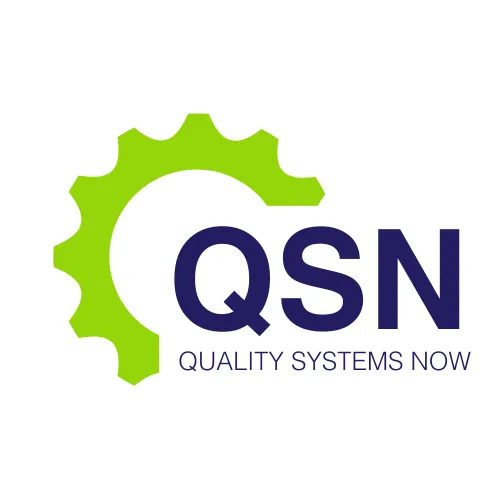Latest News

Gaining market access without the stress of failing audits
Gaining Market Access Without the Stress of Failing Audits: A Strategic Approach to Regulatory Compliance
In the sectors of pharmaceuticals, medical devices, and biotechnology, gaining market access is a complex and challenging endeavor. Companies must navigate a labyrinth of regulatory requirements enforced by agencies such as the Therapeutic Goods Administration (TGA) and the U.S. Food and Drug Administration (FDA). The stakes are high: failure to comply with these stringent regulations can result in failed audits, costly fines, product recalls, and severe damage to a company’s reputation. To mitigate these risks, organizations need a robust strategy for achieving and maintaining compliance.
At QSN, we specialize in guiding companies through the intricate landscape of regulatory compliance, ensuring that your products not only meet the highest standards but also reach the market without the stress of failing audits. Let's Talk.
Our comprehensive services are designed to support every aspect of your compliance journey, from gap analysis and audit preparation to the development of standardized processes and continuous improvement programs. Whether you’re looking to optimize your resources, integrate processes across departments, or ensure that your new product is designed for compliance from the start, QSN is your trusted partner. With our expert guidance, tailored training programs, and innovative solutions, we help you stay ahead of industry changes, streamline operations, and achieve sustainable success. At QSN, we don’t just help you meet regulatory requirements—we empower you to excel in them.
This article explores a comprehensive approach to regulatory compliance, focusing on expert guidance, training, process optimization, and continuous improvement.
Navigating Regulatory Requirements: The Role of Expert Guidance
Navigating the complex landscape of regulatory requirements is no small feat. Each regulatory body, whether it be the TGA, FDA, or other international agencies, has its own set of standards and expectations. Ensuring that a company remains compliant with these regulations requires a deep understanding of the specific requirements and a proactive approach to managing them.
One of the most effective ways to achieve compliance is through expert guidance. Regulatory experts can conduct a thorough gap analysis to identify areas where the company’s current practices fall short of regulatory expectations. This analysis serves as the foundation for developing a tailored compliance strategy, which includes audit preparation and the implementation of corrective actions to address any identified deficiencies. By working closely with regulatory experts, companies can gain a clearer understanding of the regulatory landscape and develop a plan to navigate it successfully.
Comprehensive Training Programs: Empowering Teams for Compliance
Achieving and maintaining regulatory compliance is not solely the responsibility of a company’s regulatory affairs department. It requires a collective effort from all departments within the organization. To ensure that every team member is equipped with the necessary knowledge and skills, companies must invest in comprehensive training programs.
These training programs should be designed to educate employees on the specific regulatory requirements relevant to their roles, as well as on the company’s internal processes and standard operating procedures (SOPs). By providing employees with a clear understanding of the importance of compliance and the potential consequences of non-compliance, companies can foster a culture of quality and accountability. This not only reduces the risk of non-compliance but also enhances overall quality management across the organization.
Standardizing Documentation and Processes: Ensuring Consistency and Alignment
Consistency in documentation and processes is a critical aspect of regulatory compliance. Regulatory agencies expect companies to have standardized procedures in place that ensure uniformity in how tasks are performed and documented. This is particularly important in industries where deviations from standard procedures can lead to significant risks, such as in pharmaceuticals and medical devices.
To achieve this level of consistency, companies must develop and standardize their documentation and processes across the organization. This involves creating detailed SOPs, templates, and checklists that outline the specific steps to be followed in various operations. By standardizing these elements, companies can ensure that all employees are following the same procedures, which not only improves compliance but also streamlines operations.
Integrating Processes Across Departments: Breaking Down Silos
One of the common challenges in achieving regulatory compliance is the existence of departmental silos. When different departments operate independently, it can lead to duplication of efforts, inconsistencies in processes, and communication breakdowns—all of which increase the risk of non-compliance.
To address this issue, companies must work to integrate their processes across departments. This integration involves implementing risk-based approaches to process management, which prioritize the identification and mitigation of potential risks at every stage of the operation. Additionally, enhancing cross-functional communication ensures that all departments are aligned and working towards the same compliance goals. By breaking down silos and fostering collaboration, companies can create a more cohesive and efficient organization.
Optimizing Resources: Enhancing Productivity and Reducing Costs
Effective resource management is another critical component of regulatory compliance. Companies must ensure that their personnel are not only trained and knowledgeable but also deployed in a way that maximizes their effectiveness. Additionally, processes must be efficient, and tools must be utilized to their full potential.
Optimizing resources involves conducting regular assessments of personnel, processes, and tools to identify areas where improvements can be made. This could include streamlining workflows, reallocating tasks to better-suited team members, or investing in new technologies that enhance productivity. By optimizing resources, companies can improve their operational efficiency, reduce costs, and ensure that compliance efforts are both effective and sustainable.
Continuous Improvement: Driving Ongoing Enhancements in Operations
Regulatory compliance is not a one-time achievement; it requires ongoing vigilance and continuous improvement. As regulatory requirements evolve and industry standards change, companies must be proactive in identifying inefficiencies and making necessary adjustments to their operations.
Implementing continuous improvement programs, such as Lean or Six Sigma methodologies, can be an effective way to drive ongoing enhancements. These programs focus on identifying and eliminating waste, improving process efficiency, and enhancing product quality. By embedding continuous improvement into the company’s culture, organizations can ensure that they remain compliant and competitive in an ever-changing regulatory landscape.
Supporting New Product Development: Designing for Compliance
Bringing a new product to market is a complex process that involves multiple stages, from research and development (R&D) to full-scale commercialization. Ensuring that a product is designed for compliance from the start is crucial to avoiding costly delays and potential regulatory issues down the line.
During the new product development phase, regulatory experts can provide invaluable support by ensuring that the development processes align with regulatory requirements and market expectations. This includes conducting risk assessments, developing validation protocols, and preparing for regulatory submissions. By integrating compliance considerations into the early stages of product development, companies can streamline the path to market and reduce the risk of encountering compliance issues later on.
Upgrading Facilities and Processes: Staying Ahead of Industry Changes
As the industry evolves, so too must the facilities, equipment, and processes used by companies in regulated sectors. Keeping pace with industry advancements and regulatory changes is essential to maintaining compliance and ensuring that operations remain competitive.
Companies must regularly assess their facilities and processes to identify areas where upgrades or innovations are needed. This could involve investing in new technologies, improving manufacturing processes, or enhancing quality control measures. By staying ahead of industry changes, companies can future-proof their operations and position themselves for long-term success.
Ensuring Smooth Product Transition: From R&D to Commercialization
The transition of a product from R&D to full-scale commercialization is a critical phase that requires careful planning and execution. This phase involves scaling up production processes, validating the manufacturing methods, and preparing for regulatory submissions. Any misstep during this transition can result in delays, increased costs, and potential compliance issues.
To ensure a smooth transition, companies must focus on meticulous planning and validation. This includes developing detailed scale-up plans, conducting thorough process validations, and ensuring that all regulatory requirements are met before the product reaches the market. By taking a proactive approach to product transition, companies can bring their products to market efficiently and compliantly.
Learn More: A Strategic Path to Market Access and Compliance
Gaining market access in regulated industries is a complex process that requires a strategic and comprehensive approach to regulatory compliance. By leveraging expert guidance, providing comprehensive training, standardizing documentation and processes, integrating departmental operations, optimizing resources, and embracing continuous improvement, companies can navigate the regulatory landscape with confidence. Additionally, by focusing on compliance during new product development, upgrading facilities and processes, and ensuring smooth product transitions, organizations can achieve market access without the stress of failing audits.
In a world where regulatory requirements are constantly evolving, the key to success lies in a proactive and holistic approach to compliance. By embedding these strategies into their operations, companies can not only meet regulatory expectations but also enhance their overall operational excellence and market competitiveness.
